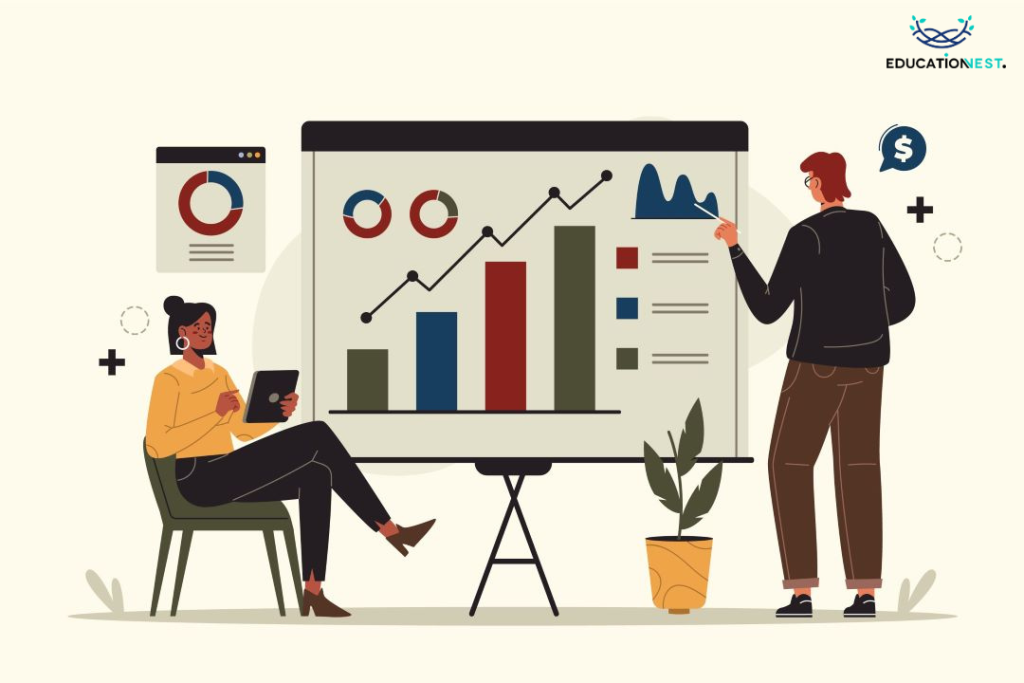In today’s fast-paced world, the importance of business analytics cannot be overstated. At the heart of successful organizations, business analytics applications play a crucial role in deciphering complex data, enabling informed decision-making, and unlocking new opportunities for growth. This is why more individuals and companies are investing in business analytics courses. These courses equip learners with the tools and knowledge necessary to navigate the business analytics process effectively. Understanding the importance of business analytics and how to apply it through various applications is essential for anyone looking to drive their company forward. With the right approach and tools, the complex world of data becomes a goldmine of insights and opportunities. This blog will explore some of the top business analytics applications, providing examples to illustrate their impact. Whether you’re a seasoned professional or just starting out, these insights will help you understand the transformative power of business analytics.
Business Analytics Applications Explained
Business analytics applications are like powerful tools that help companies make sense of a lot of data. Imagine having a giant pile of puzzle pieces. On their own, these pieces don’t mean much. But when you start putting them together, you create a clear picture. That’s what these applications do with data. They take numbers, facts, and figures from different parts of a business and analyze them to provide insights and answers to complex questions. This could be anything from figuring out what customers like, to finding ways to save money, or even predicting what products will be popular in the future. By using these applications, businesses can make decisions that are informed by data, rather than just guessing. This helps them grow by serving their customers better, being more efficient, and staying ahead of the competition. In simple terms, business analytics applications turn data into a roadmap for success.
Now, let’s have a look at a few business analytics applications with examples.
Customer Relationship Management (CRM)

CRM systems are a shining example of business analytics applications in action. These systems collect and analyze customer interactions across various channels. The goal? To improve business relationships, retain customers, and boost sales. Companies use CRM data to understand customer behavior, segment markets, and personalize communications.
For instance, a retail company might use its CRM to track a customer’s purchase history and browsing habits. With this data, they can tailor product recommendations, sending personalized offers that the customer is more likely to appreciate and act on. This not only enhances the customer experience but also increases the likelihood of repeat business.
Supply Chain Optimization
Another powerful application of business analytics is in supply chain optimization. By analyzing data from every link in the supply chain, companies can identify inefficiencies, predict potential disruptions, and improve overall performance. This might include optimizing inventory levels, enhancing delivery routes, or selecting suppliers based on performance and risk analysis.
A real-world example would be a manufacturing firm using analytics to monitor its supply chain in real time. By predicting which materials will be in short supply, the company can proactively reorder or find alternative suppliers, thus avoiding production delays and meeting customer demand more reliably.
Financial Management
Financial management is an area greatly enhanced by business analytics applications. By analyzing financial data, companies can make better budgeting, investment, and risk management decisions. This includes forecasting revenues, managing cash flow, and identifying profitable investment opportunities.
Consider a technology startup that uses analytics to monitor its cash flow closely. By understanding its financial health in real time, the startup can make informed decisions on when to invest in new projects or when to tighten the belt, ensuring long-term sustainability.
Human Resources Analytics
Human resources (HR) analytics is revolutionizing the way companies manage their workforce. By analyzing employee data, organizations can improve hiring practices, enhance employee engagement, and reduce turnover rates. This might involve identifying the traits of high-performing employees, optimizing training programs, or predicting staffing needs.
For example, a multinational corporation might use HR analytics to analyze the characteristics of its most successful employees. This information can then inform recruitment, helping the company to hire candidates who are more likely to succeed and fit well with the company culture.
Also Read:
Importance of Financial Analytics: A Complete Guide
Marketing Optimization
Lastly, marketing is an area where business analytics applications shine brightly. By analyzing market trends, customer feedback, and campaign performance, companies can craft more effective marketing strategies. This includes identifying target demographics, optimizing ad spend, and creating content that resonates with the intended audience.
Imagine a small business leveraging analytics to track the performance of its online advertising campaigns. By understanding which ads generate the most engagement and conversions, the business can allocate its budget more effectively, focusing on the strategies that deliver the best return on investment.
In Conclusion
The applications of business analytics are vast and varied, touching every aspect of a business. From customer relationship management to supply chain optimization, financial management, human resources, and marketing, analytics provides the insights needed to make smarter, data-driven decisions. As the world becomes increasingly data-centric, the importance of business analytics will only grow. For those looking to stay ahead, investing in business analytics courses and embracing the business analytics process is a step towards a more informed and successful future. With the right knowledge and tools, the possibilities are endless.
